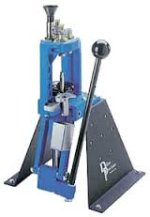Greg Mercurio
New member
I had no idea how disadvantaged I was with my RL550B. Not having a powder check die means being visually involved with the process. Manual indexing makes me more involved with the process as well. Different strokes I guess.
That said, with multiple 10's of thousands of loads made in multiple calibers on 2 Square Deal's and a RL550B, I prefer the Dillon machines. To be fair, I've never used another brand of progressive, so comparisons aren't available. But when there's a problem, the solution is 1 phone call away.
For reference, I also have 4 single stage presses for those calibers I load in low volume.
That said, with multiple 10's of thousands of loads made in multiple calibers on 2 Square Deal's and a RL550B, I prefer the Dillon machines. To be fair, I've never used another brand of progressive, so comparisons aren't available. But when there's a problem, the solution is 1 phone call away.
For reference, I also have 4 single stage presses for those calibers I load in low volume.



